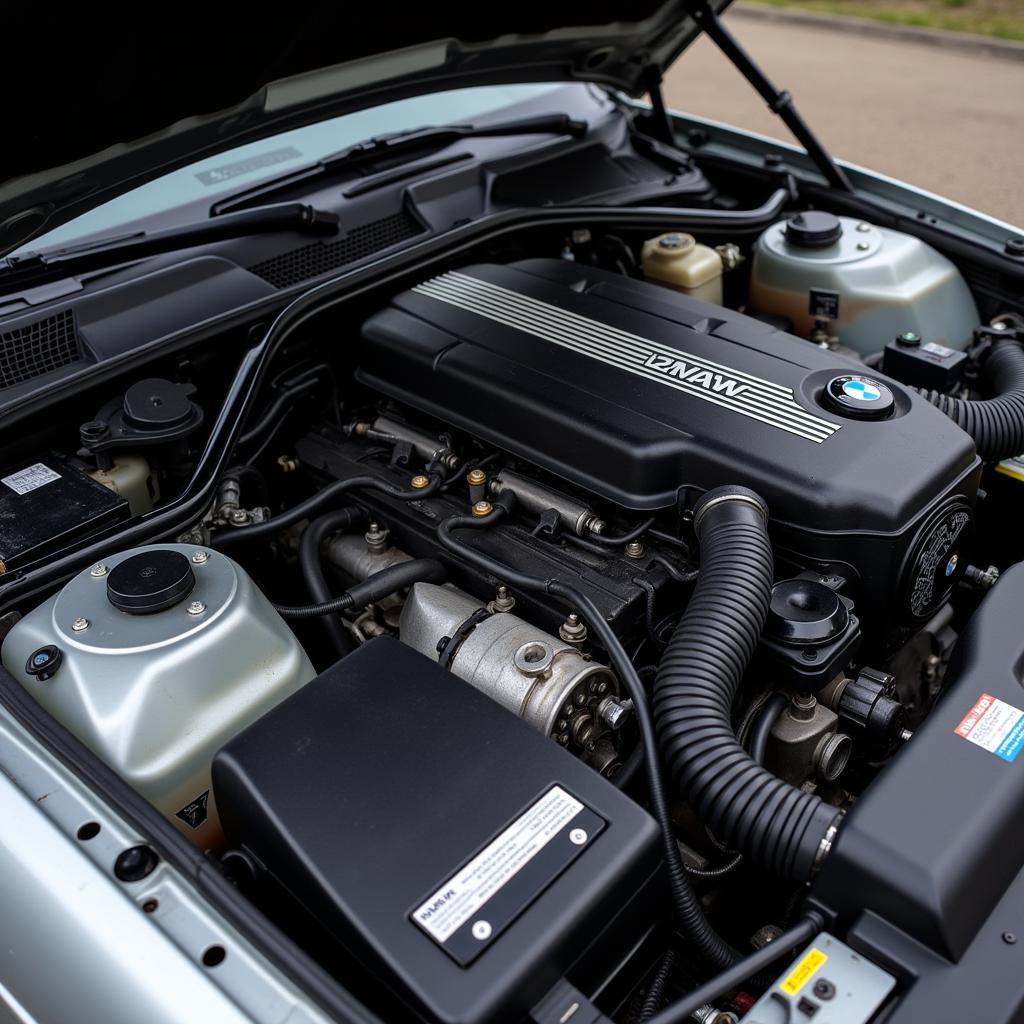While it might seem strange, the appearance and even the smell of a vehicle’s urine-like fluids can offer valuable clues about its health. Just like doctors use urinalysis to diagnose medical conditions, automotive technicians can analyze fluids like coolant and transmission fluid to pinpoint issues within a car’s various systems.
One of the key advantages of using urine as a diagnostic tool is its accessibility. These fluids are readily observable during routine checks or when a problem is suspected. By paying attention to changes in color, consistency, or odor, car owners and mechanics alike can gain early insights into potential problems, potentially saving time and money on costly repairs down the line.
Deciphering the Messages in Your Car’s Fluids
Different fluids in your car can tell different stories about its well-being. Here’s a breakdown of what to look for:
1. Coolant: The Engine’s Lifeline
Coolant, the often brightly colored fluid in your radiator, plays a vital role in regulating your engine’s temperature.
- Healthy Coolant: Typically green, orange, or yellow and has a slightly sweet smell. It should be translucent with a consistent consistency.
- Cause for Concern:
- Milky or Oily Coolant: Could indicate a blown head gasket, a serious issue where the engine block and cylinder head meet, allowing coolant and oil to mix.
- Rusty Brown Coolant: Often signals rust buildup in the cooling system, which can lead to blockages and overheating.
- Burnt Smell: Might point to a failing water pump or a leak in the cooling system, causing the engine to overheat.
2. Transmission Fluid: Shifting Gears Smoothly
Transmission fluid is essential for the smooth operation of your vehicle’s transmission system.
- Healthy Transmission Fluid: Usually reddish-brown and almost clear, with a slightly sweet odor.
- Cause for Concern:
- Burnt Smell: Suggests the transmission is overheating, possibly due to low fluid levels, a failing transmission cooler, or internal problems within the transmission itself.
- Dark Brown or Black Fluid: Indicates severely burnt fluid, often a sign of significant transmission wear and tear or damage. This requires immediate attention.
- Metal Particles in Fluid: A very bad sign. This suggests severe damage within the transmission, often requiring a rebuild or replacement.
3. Brake Fluid: Stopping Power You Can Trust
Brake fluid is vital for your car’s braking system to function correctly.
- Healthy Brake Fluid: Typically clear or slightly yellow.
- Cause for Concern:
- Dark or Murky Brake Fluid: Can indicate contamination or moisture in the system, reducing braking efficiency.
- Low Fluid Level: Often a sign of worn brake pads or a leak in the braking system.
“Never underestimate the importance of regular fluid checks,” says veteran mechanic John Miller. “It’s a simple yet effective way to catch small problems before they escalate into major headaches.”
Don’t Ignore the Warning Signs
Changes in the color, consistency, or smell of your car’s fluids are often early indicators of underlying issues. Ignoring these signs can lead to more severe damage and expensive repairs.
If you notice anything unusual about your car’s fluids, it’s crucial to have it checked by a qualified mechanic as soon as possible. They have the expertise and diagnostic tools for prostate cancer to diagnose the problem accurately and recommend the appropriate course of action.
Early detection and timely maintenance are key to keeping your vehicle running smoothly and avoiding costly repairs.
FAQs
1. How often should I check my car’s fluids?
It’s good practice to visually inspect your car’s fluids at least once a month. Refer to your owner’s manual for specific recommendations for your vehicle model.
2. Can I top off my car’s fluids myself?
Yes, you can top off most fluids yourself. However, if you need to add fluid frequently, it’s essential to have your car checked for leaks.
3. What should I do if I see something unusual in my car’s fluids?
If you notice any changes in color, consistency, or smell, it’s best to err on the side of caution and consult with a qualified mechanic.
4. Can old fluids damage my car?
Yes, over time, fluids can break down and become less effective, potentially leading to reduced performance and even damage to your vehicle’s systems.
5. Is it expensive to have my car’s fluids flushed and replaced?
While it represents an upfront cost, regular fluid flushes and replacements are a cost-effective preventative measure that can save you from more expensive repairs in the long run.
Contact Us
For all your automotive diagnostic needs and expert advice, contact ScanToolUS today at +1 (641) 206-8880 or visit our office at 1615 S Laramie Ave, Cicero, IL 60804, USA. We’re here to help you keep your car running smoothly.



Pingback: How is Urinalysis a Valuable Diagnostic Tool? - Car Scan Tool